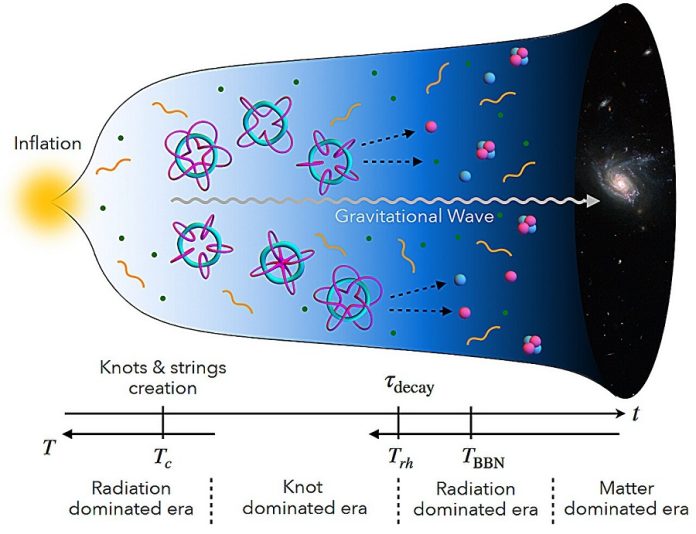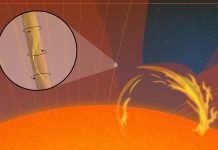
More than 150 years ago, the famous British physicist Lord Kelvin imagined that atoms were tiny knots twisting through an invisible substance called the “aether.”
His idea was later dismissed, but now, scientists in Japan believe that Kelvin’s old vision might hold a surprising clue to one of the biggest mysteries in science—why our universe exists at all.
In a new study published in Physical Review Letters, researchers from Hiroshima University, Yamagata University, and Germany’s Deutsches Elektronen-Synchrotron have found that special kinds of “cosmic knots” could have formed in the newborn universe.
These knots, made of tangled energy fields, may have briefly dominated the cosmos after the Big Bang and helped create the imbalance between matter and antimatter that allowed stars, planets, and life to exist.
According to the Big Bang theory, the universe began with equal amounts of matter and antimatter.
These two types of particles destroy each other when they meet, leaving only energy behind. Yet the universe today is filled with matter—us, the stars, and everything else—while antimatter is almost nowhere to be found.
For every billion pairs of matter and antimatter particles, just one extra piece of matter somehow survived.
This slight imbalance, known as baryogenesis, remains one of the greatest unsolved problems in physics.
The Standard Model—the theory that explains most known particles and forces—can’t fully explain it.
But physicists Muneto Nitta and Minoru Eto from Hiroshima University’s International Institute for Sustainability with Knotted Chiral Meta Matter (WPI-SKCM²), together with Yu Hamada from Germany, think they may have found an elegant answer.
The researchers combined two powerful ideas in particle physics: the B–L symmetry (Baryon number minus Lepton number) and the Peccei–Quinn (PQ) symmetry.
These symmetries explain several long-standing puzzles, such as why neutrinos—the nearly massless “ghost” particles that pass through everything—actually have mass, and why the neutron doesn’t have a tiny electric dipole moment as theory predicts.
The PQ symmetry also gives rise to the axion, a possible dark matter particle.
When these symmetries broke down shortly after the Big Bang, the universe went through phase transitions, much like water freezing into ice.
This process could have left behind thin, thread-like defects known as cosmic strings. The team found that, under the right conditions, these strings could twist and link together, forming stable, knotted loops called knot solitons.
These cosmic knots stored huge amounts of energy and, unlike radiation, faded very slowly. For a short time, they might even have dominated the universe.
Eventually, the knots decayed through a process called quantum tunneling, releasing a burst of particles—including heavy right-handed neutrinos. These rare particles are thought to decay slightly more into matter than antimatter, creating the imbalance that allowed all later structures in the universe to form.
When the scientists ran their equations, they found that the decay of these knots could have reheated the universe to around 100 billion electronvolts—a temperature just right for producing the observed matter-antimatter imbalance. The process may also have left behind a distinctive pattern in gravitational waves, tiny ripples in spacetime.
Future observatories such as LISA in Europe, Cosmic Explorer in the U.S., and DECIGO in Japan might one day detect this faint “hum” from the early universe.
While Lord Kelvin’s 19th-century idea of knotted atoms was wrong, his intuition about knots in nature might have been remarkably prescient. As Professor Nitta said, “Our work suggests that knots could have played a crucial role in the origin of matter. They may not be the building blocks of atoms—but they might just be the reason atoms exist at all.”
Source: KSR.



